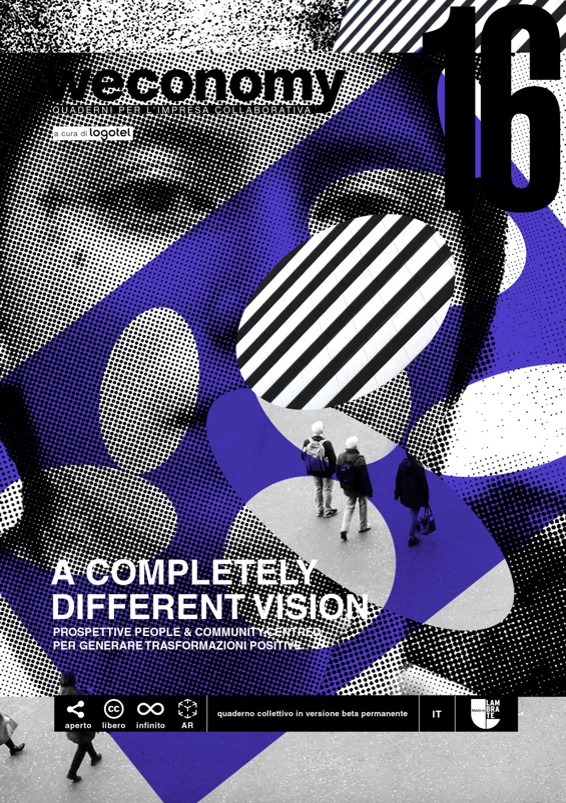Convergence and divergence in organizations. A possible co-existence
The tension between convergence and divergence offers organisations the chance to build transformative communities open to innovation.

The tension between convergence and divergence offers organisations the chance to build transformative communities open to innovation.

In un’era di grandi trasformazioni, è ormai fondamentale per le organizzazioni gestire due dinamiche apparentemente inconciliabili: la convergenza, intesa come coesione della collettività verso una direzione condivisa; e la divergenza che esalta le singole individualità e genera prospettive di cambiamento. Ma come gestire la tensione che emerge tra le due, conciliando la natura aggregatrice dell’una e quella disgregatrice dell’altra?
Quando si affrontano processi di cambiamento aziendale la promozione della convergenza sembra essere diventata predominante rispetto alla divergenza. Pensiamo alle trasformazioni degli ultimi anni, per esempio quelle messe in atto da due aziende leader per guidare i propri dipendenti verso nuove visioni: General Electric con “Ecoimagination vision” e IBM con “Smarter Planet”. In entrambi i casi, la partecipazione di tutte le persone a ogni livello dell’organizzazione e la diffusione del consenso verso valori e obiettivi condivisi sono stati fondamentali per GE nell’affrontare le sfide ambientali nella produzione, e per abilitare IBM a ripensare un mondo più interconnesso.
Spostando lo sguardo verso il mondo dell’innovazione, però, assistiamo a un’anomalia che sembra raccontare il contrario: la creazione di visioni innovative può emergere da pochi individui che – collocati negli spazi interstiziali della comunità organizzativa – esplorano idee radicali in contrasto con la strategia promossa dell’impresa. Quando nel 2001 Microsoft lanciò la console Xbox per competere con la PlayStation 2 di Sony, il mercato non si aspettava una scelta così radicale. Il gigante del software, infatti, non entrava nel mondo del gaming come fornitore, per affiancare altri produttori di piattaforme e sviluppatori di applicazioni. Microsoft aprì un nuovo business di prodotti hardware, basato su un sistema operativo addirittura incompatibile con Windows – il suo prodotto di punta –, per offrire ai giovani consumatori una nuova esperienza di divertimento.
Tracciando le origini della visione di Xbox, il professor Roberto Verganti parla di “radical circle”: un gruppo di pochi colleghi – Backley, Bachus, Hase and Berkes – non connessi da legami formali all’interno dell’organizzazione che, avvertendo un malessere nei confronti della strategia aziendale, avevano iniziato volontariamente una ricerca (silenziosa) che, dopo breve tempo, avevano sottoposto all’ascolto dei vertici aziendali.
La nascita dell’Xbox è solo un esempio di come l’apertura a idee “dissidenti” abbia generato visioni innovative per la comunità. Secondo la psicologa Charlan Nemeth, il dissenso di alcuni troublemakers a volte ha più valore dell’opinione della maggioranza: mette in discussione lo status quo, integra più informazioni e impegna la mente in un processo decisionale creativo. La bandiera pirata issata nel campus di Cupertino per volere di Steve Jobs durante uno degli innumerevoli periodi di scontro con Apple testimonia ancora il concetto.
A fronte di queste di queste due dinamiche, convergenza e divergenza, la comunità costituisce quindi il terreno di scontro tra forze polarizzate. Se le dinamiche di convergenza sono funzionali a favorire la coesione sociale durante periodi di trasformazione, esse rischiano allo stesso tempo di innescare meccaniche di inerzia e bias di conferma verso vecchi paradigmi. Allo stesso modo, idee divergenti possono portare allo sviluppo di nuove visioni radicali, ma anche causare frammentazione. Come evitare la rottura?
La conciliazione delle due forze sembra risiedere nella cooperazione e nell’ascolto tra le due parti: la totalità delle voci che promuove un paradigma dominante e le singole voci che si pongono in controtendenza rispetto ad esso. I quattro autori della visione dell’Xbox all’interno di Microsoft operavano in modo radicale, ma non distruttivo. Promuovevano qualcosa che l’organizzazione non era ancora in grado di vedere, ma agivano per il successo dell’azienda stessa. Dall’altra parte, i vertici di Microsoft avevano prestato ascolto alla voce contrastante, valutandone il valore visionario. Questa attitudine non è stata un episodio sporadico: negli anni Microsoft ha fatto dell’ascolto di “pochi” la propria ricetta per l’innovazione attraverso il programma Microsoft Garage, uno spazio dove chiunque all’interno dell’azienda potesse portare avanti idee lontane dal business as usual.
Ed è così che la tensione tra queste forze contrastanti diventa spazio di opportunità per le organizzazioni.
Strumenti di analisi del clima aziendale permettono di identificare l’emergere di attitudini positive e contrastanti con la direzione promossa dall’azienda. Se da una parte possono essere utilizzati per confermare la diffusione di idee comuni, dall’altra possono diventare uno strumento per investigare maggiormente il “malessere” di alcuni e trasformare la proposizione di stimoli contrastanti in possibilità per poter innovare. Diventa questo il terreno di progettazione che le organizzazioni hanno di fronte per costruire comunità trasformative aperte all’innovazione: dare continuamente voce al dissenso, valorizzandolo come forma di partecipazione alla comunità e integrandolo nel dibattito, in un equilibrio dinamico che alterna convergenza e divergenza.

Published in Weconomy 16 – Una visione completamente diversa
